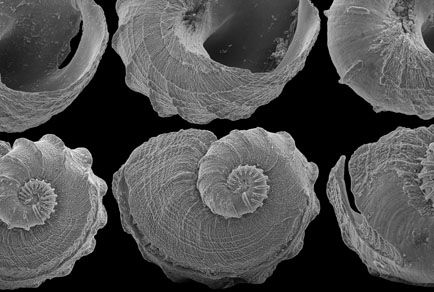Abstract
Three new Scissurellidae and one new Anatoma (Anatomidae) are described from Cape Manazuru, Sagami Bay, and Okinawa, Japan. Sinezona costulata n. sp. from Sagami Bay has a protoconch with strong axial cords, the apertural varix is not connected to the embryonic cap, and the teleoconch sculpture is initially of strong axials, which are replaced on the shoulder at the apertural margin by fine spiral lines. Sinezona milleri n. sp. from Okinawa has a similar protoconch to S. costulata, and the teleoconch sculpture gives rise to a reticulate pattern at the apertural margin. The seven described and two new Japanese species of slit-bearing Scissurellidae are compared. Coronadoa hasegawai n. sp. from Sagami Bay is the second species in the genus and is characterised by distinct sculpture on the embryonic cap of the protoconch. Anatoma parageia n. sp. from Sagami Bay is a rare example of a shallow water anatomid. The shell is covered with numerous very fine axial cords that form minute, spirallyarranged points giving the impression of spiral sculpture (pseudospirals), and has undulating axial cords on the base. Depth preferences of Scissurellidae and Anatomidae are examined on a world-wide scale, but no change in turnover depth with latitude could be detected. The depth preferences of the two families are most likely explained by the extent to which variable food sources can be utilised.

